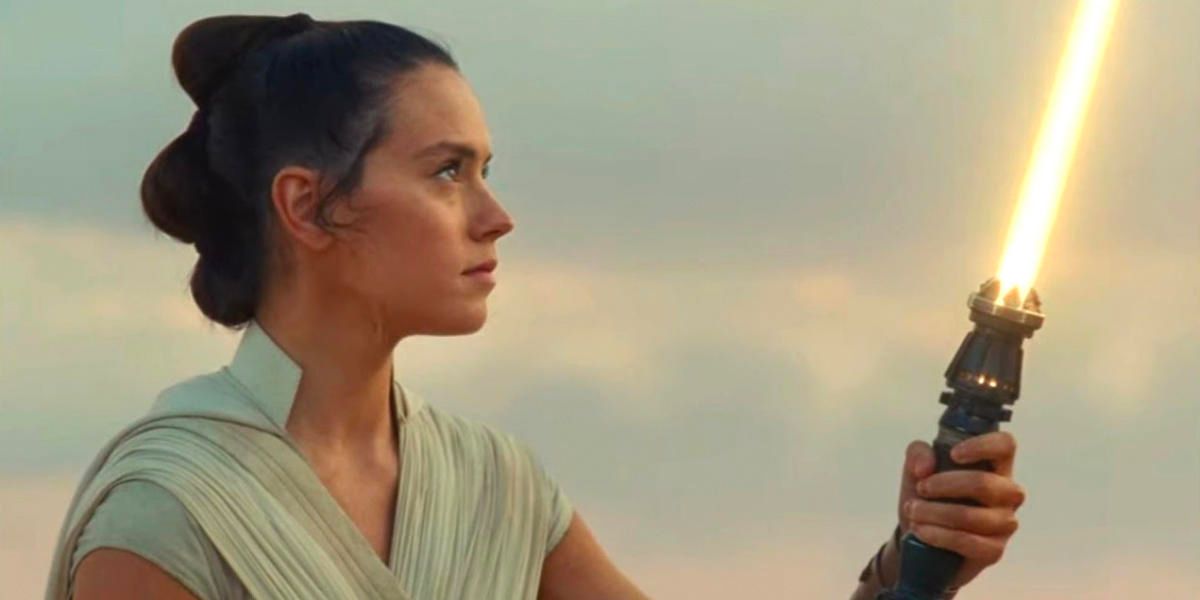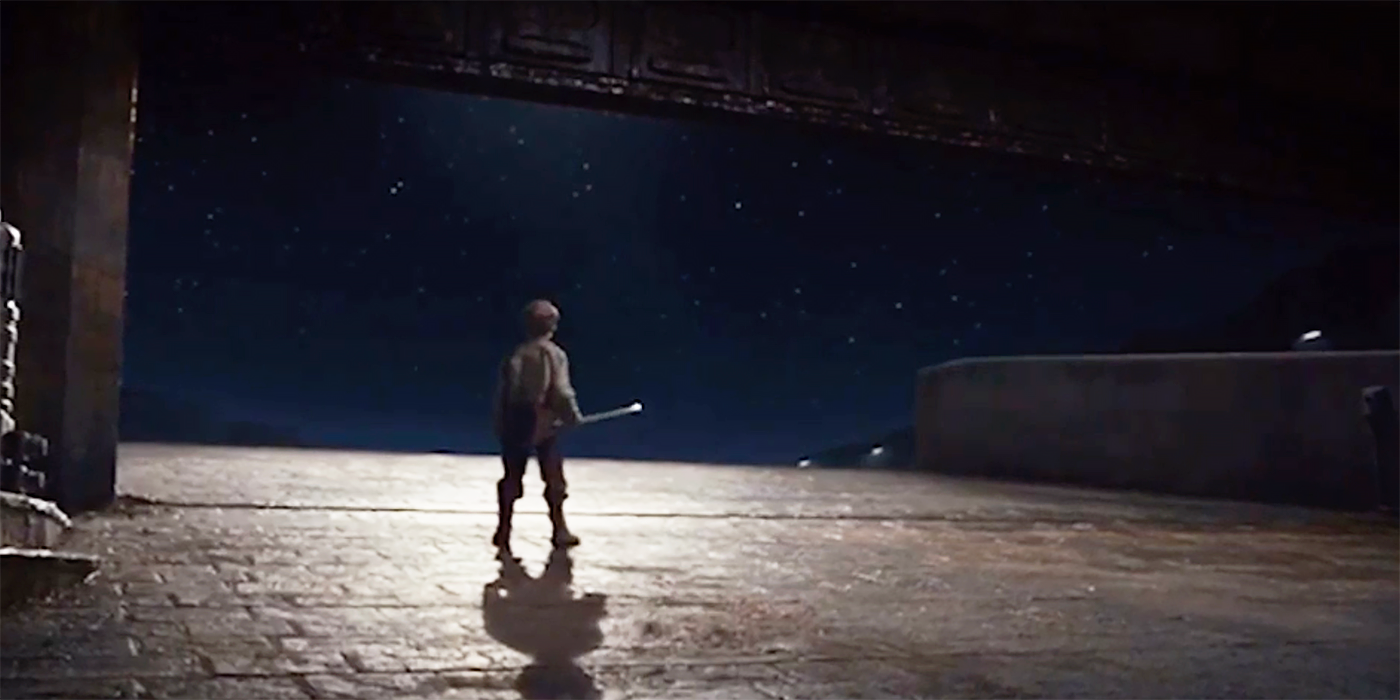Editor’s Note: The following contains spoilers for Ahsoka Episode 3.
The Big Picture
- Ahsoka explores Jedi training and the struggle to connect with the Force, echoing themes from previous Star Wars films like A New Hope and The Last Jedi.
- The franchise has presented conflicting perspectives on the Force, with A New Hope emphasizing its accessibility to all living beings, while The Phantom Menace introduced the idea of bloodlines and genetics.
- The Last Jedi and The Rise of Skywalker reaffirm that anyone can use the Force, despite the importance of bloodlines, by showcasing characters like Rey, Finn, and Broom Boy.
Ahsoka continues to develop stories and characters from several Star Wars TV series, including Star Wars: The Clone Wars, Star Wars Rebels, and The Mandalorian, among others. But it also shares themes and ideas with several of the franchise’s films. The series’ third episode featured Jedi training sequences that recalled the original Star Wars film, Star Wars Episode IV – A New Hope, while also repeating a lesson about the Force and its nature that was featured in Rian Johnson‘s Star Wars: Episode VIII – The Last Jedi.
In Episode 3 of Ahsoka, Sabine Wren (Natasha Liu Bordizzo) resumes her Jedi training with Ahsoka Tano (Rosario Dawson). Although her experience as a Mandalorian warrior helps her perform adequately in some basic sparring sessions Sabine struggles to connect to the Force, making her unsuccessful in her attempts to duel Ahsoka while blinded by a visor and to move a cup telekinetically. These scenes follow one in the previous episode in which Jedi training droid Huyang (David Tennant) told Sabine she has minimal potential for using the Force. It’s clear that her road to becoming a Jedi will not be an easy one, although it still seems likely that she will eventually succeed, which would prove an important point about the Force previously established by A New Hope that was largely abandoned until The Last Jedi.
The Force Has Always Been About Magic vs. Science
In A New Hope, the Force is defined by Obi-Wan Kenobi (Sir Alec Guinness) as “an energy field created by all living things.” He stated that it “surrounds us, it penetrates us, it binds the galaxy together.” This made it seem like it was possible for any being to connect to and use the Force in the ways the Jedi do, a point which Yoda (Frank Oz) further supported during his training of Luke Skywalker (Mark Hamill) in the subsequent film, Star Wars: Episode V – The Empire Strikes Back. However, the reveal later in that film that Darth Vader (David Prowse and James Earl Jones) was Anakin Skywalker, Luke’s father, changed the franchise’s perspective on the Force for many years. Star Wars: Episode VI – Return of the Jedi focused on the Skywalker family’s powerful connection to the Force, and didn’t introduce any new characters that could use it. Luke’s ability to connect to Leia Organa (Carrie Fisher) through the Force was explained by the reveal that she was his twin sister.
The first film in the franchise’s Prequel Trilogy, Star Wars: Episode I – The Phantom Menace further emphasized the importance of genetics and bloodlines in accessing the Force. The film introduced the concept of the midi-chlorians, microscopic lifeforms said to live inside the cells of all living beings. They were said to create the connection between beings and the Force and the amount of midi-chlorians someone possessed was shown to serve as an indicator of the strength of their connection to the Force. When Qui-Gon Jinn (Liam Neeson) noticed the significant Force-wielding potential of a young Anakin (Jake Lloyd) he had Obi-Wan (Ewan McGregor) run a test on a sample of his blood. This showed that Anakin had more than 20,000 midi-chlorians, a number said to be higher than Yoda’s or any other Jedi’s, leading to Qui-Gon’s belief that he was the prophesied Chosen One and Yoda’s eventual decision to allow Anakin to be trained as a Jedi. While talking with Anakin’s mother, Shmi (Pernilla August), Qui-Gon said that if he had been born in the Republic Anakin would have been identified as a potential Jedi sooner, suggesting that the Jedi Order frequently used genetic tests like this to select recruits. The introduction of the midi-chlorians was one of several elements of The Phantom Menace that was heavily criticized, as fans felt that it demystified the Force by providing a scientific explanation for it. This is something of an overreaction, as there is still plenty about the Force that is mystical and mysterious, but it did create the impression that characters from specific bloodlines are more likely to have strong connections to the Force than others.
‘The Last Jedi’ Reaffirmed That Anyone Can Use the Force
The Last Jedi devoted significant parts of its storyline to restoring the sense of magic and unlimited possibility the Force had in A New Hope. The prior film in the Sequel Trilogy, Star Wars: Episode VII – The Force Awakens introduced the character Rey (Daisy Ridley), who had a strong natural aptitude for the Force and the Jedi arts. That aptitude and the mystery surrounding her parents’ identities led many viewers to suspect that Rey was related to the Skywalkers, likely either the daughter of Luke or of Leia and Han Solo (Harrison Ford). But The Last Jedi revealed that this was not the case. In the film Supreme Leader Snoke (Andy Serkis) used the Force to connect Rey’s mind to that of Han and Leia’s son Ben/Kylo Ren (Adam Driver).
During one of their psychic interactions Ben saw visions of Rey’s past and future after which he told her that her parents were no one of significance but instead were “filthy junk traders who sold you out for drinking money,” and were long dead. In light of this, the fact that Rey was still so powerful suggested that genetics weren’t as important in creating a connection to the Force as The Phantom Menace and other projects made it seem. However, the impact of this message was dampened by the subsequent film, Star Wars: Episode IX – The Rise of Skywalker, which revealed that Rey was in fact the granddaughter of the franchise’s main villain, Sith Lord Sheev Palpatine/Darth Sidious (Ian McDiarmid), once again emphasizing the importance of powerful bloodlines.
But The Last Jedi had an additional storyline that still gets the message across. Partially through the film former stormtrooper Finn (John Boyega) and Resistance mechanic Rose Tico (Kelly Marie Tran) travel to a casino town on the planet Canto Bight to recruit a master codebreaker to help the Resistance space fleet escape the First Order. The pair are captured by local authorities shortly after their arrival. They escape custody thanks to a group of child laborers, who are eager to help after learning that Finn and Rose represent the Resistance. At the end of the film the children are further inspired by the Resistance and Jedi and are excitedly telling stories of Luke’s involvement at the Battle of Crait before they are scared back to work by their boss.
One of them, a young boy (Temirlan Blaev), steps outside and appears to move a broom into his hand with the Force. The final shots of the film show him looking at the stars while holding the broom in a way that makes him look like a Jedi holding a lightsaber while wearing Rose’s Resistance ring. As nothing suggests that Broom Boy, as he’s known by fans, is related to any famous Star Wars characters, this cemented the idea that the Force touches everyone in the galaxy and that anyone has the potential to use it, while also paying tribute to the awe-inspiring effects the Star Wars franchise has had on viewers, especially children.
‘The Rise of the Skywalker’ Still Shows That Anyone Can Be Touched by the Force
Even though connecting Rey to Palpatine detracted from it, The Rise of Skywalker did support the idea of anyone being able to use the Force in its own way. By the time of that film, Finn has apparently developed some amount of Force-sensitivity, as he is shown being able to sense Rey’s thoughts and presence as well as Ben’s. When the protagonists are about to be swallowed by quicksand at one point he tells Rey there is a secret he must confess, but when they find themselves underground he decides not to tell her in front of Poe Dameron (Oscar Isaac). While it’s possible his secret could be something else, like that he is in love with her, it was probably the fact that he could feel the Force.
Given how much time is being spent on her training it seems inevitable that Sabine will be able to use the Force, at least to some extent, by the end of Ahsoka, providing more support for the idea that anyone can do so and continuing The Last Jedi’s work of restoring the sense of wonder the subject had before The Phantom Menace by deemphasizing the connection between genetics and Jedi potential. This would be especially fitting given that another theme of the series seems to be that Jedi need to move away from some of the ideas and practices of the old Order, as Ahsoka has already done in some of her past appearances. Finn and Broom Boy could continue to expand these ideas into the Sequel era if they ever make more appearances, though it’s uncertain if and when they will do so. It would seem like a natural choice for Finn to be included in the upcoming film about Rey’s new Jedi Order and many expect Broom Boy to appear in Johnson’s Star Wars trilogy if it ever gets made, but there are no guarantees that any of those things will happen
Denial of responsibility! TechCodex is an automatic aggregator of the all world’s media. In each content, the hyperlink to the primary source is specified. All trademarks belong to their rightful owners, and all materials to their authors. For any complaint, please reach us at – [email protected]. We will take necessary action within 24 hours.
Khushi Patel is a science fiction author who lives in Austin, Texas. She has published three novels, and her work has been praised for its originality and imagination. Khushi is a graduate of Rice University, and she has worked as a software engineer. She is a member of the Science Fiction Writers of America, and her books have been nominated for several awards.




